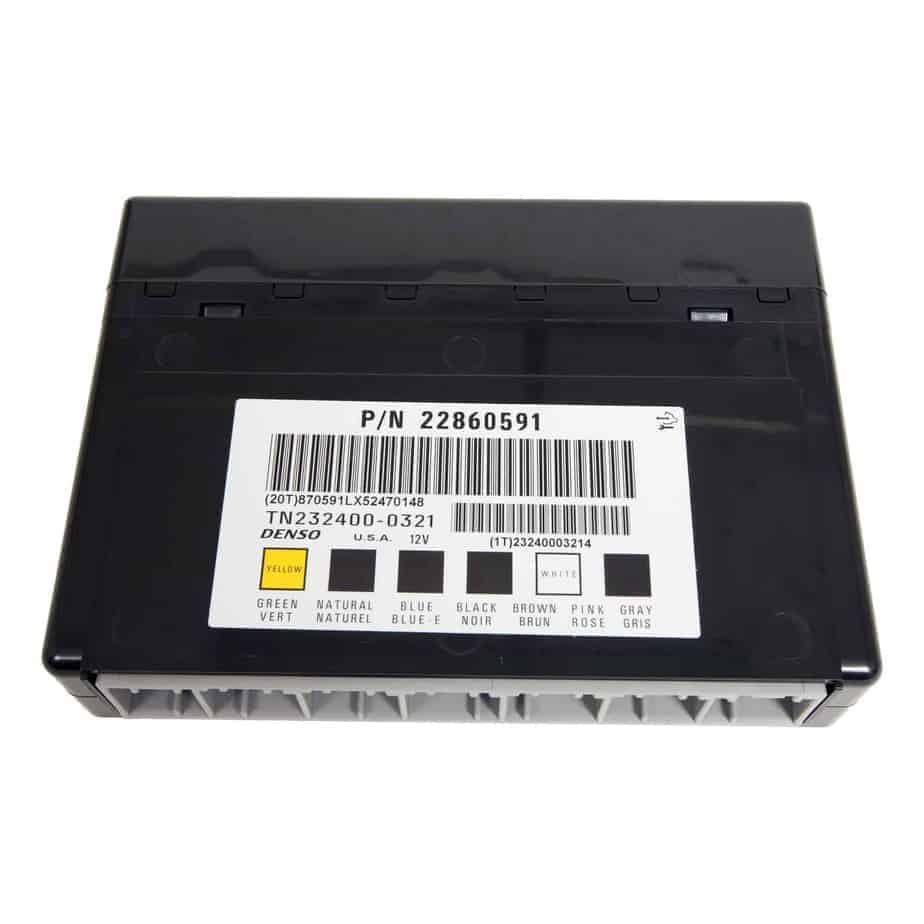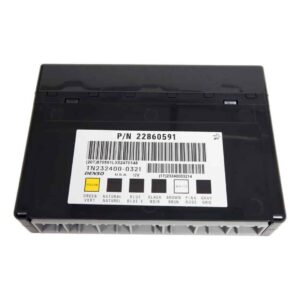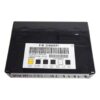Restore Your Vehicle’s Electrical System with a Reliable BCM
Are you dealing with baffling electrical issues in your vehicle? Power windows with a mind of their own, dashboard lights flickering randomly, or a security system that prevents your car from starting? These are classic signs of a failing Body Control Module (BCM). As the central hub for your vehicle’s body electronics, a faulty BCM can cause widespread and frustrating problems. This isn’t just an inconvenience; it can affect vehicle safety and reliability. This is the definitive solution to restore full functionality and peace of mind.
This isn’t just a replacement part; it’s a complete, ready-to-install solution. We handle the most complex part of the job for you. Before shipping, our technicians will program this module with the latest GM software updates, specifically matched to your vehicle using the VIN you provide. This means you can bypass the expensive trip to the dealership and the need for specialized programming tools. For the professional mechanic, this saves valuable time and bay space. For the DIYer, it makes a complex job manageable and affordable.
A Technician’s Notebook: The Case of the Captiva’s Chaos
I once had a 2012 Captiva in my bay that was an absolute electrical nightmare. The owner reported the horn would honk when using the turn signal, and the interior lights would stay on, draining the battery overnight. A quick scan showed a dozen communication codes (U-codes) pointing in every direction. Instead of chasing ghosts, I went straight to the BCM. After swapping in a pre-programmed module just like this one, every single issue vanished. It’s a powerful reminder that when multiple, unrelated electronic systems fail at once, the BCM is almost always the culprit.
Common Signs of a Failing BCM
- ✔ Erratic or non-functional power windows, locks, and mirrors.
- ✔ Interior or exterior lights that won’t turn on or off correctly.
- ✔ Instrument cluster warning lights (like the security or airbag light) illuminating for no reason.
- ✔ Problems with the remote keyless entry system.
- ✔ The vehicle’s anti-theft system preventing the engine from starting.
- ✔ Communication error codes, often starting with ‘U’ (e.g., U0140), stored in various modules.
- ✔ Wipers or radio operating intermittently or not at all.
Your Straightforward BCM Installation Guide
Installing your new 2012 Captiva Body Control Module is a direct process. While the exact location is in the center dash area for the Captiva, always confirm with a service manual for your specific model.
- Safety First: Always disconnect the negative terminal from your vehicle’s battery and wait 10-15 minutes for capacitors to discharge.
- Locate the BCM: On the 2012 Captiva, the BCM is typically located in the center dash console area. You may need to remove trim panels for access.
- Disconnect and Remove: Carefully unplug the electrical connectors from the old BCM. Note their orientation. Then, unbolt or unclip the module from its mounting bracket.
- Install the New Module: Mount the new, pre-programmed BCM in place and securely reconnect all electrical harnesses. Ensure they click into place.
- Reconnect Power: Reattach the negative battery terminal.
- Perform Final Checks: Start the vehicle and test all related functions: lights, locks, windows, wipers, and radio. Address any post-installation procedures as needed (see below).
Important Post-Installation Steps
While we handle the primary programming, some vehicle systems may require a ‘handshake’ with the new BCM. This may include:
- Airbag System Sync: If your airbag warning light is on after installation, a ‘Setup SDM Primary Key in BCM’ procedure is needed using a professional-grade scan tool. This syncs the security information between the airbag system and the new BCM.
- Brake Pedal Position Relearn: On some models, a brake pedal position sensor recalibration might be necessary to ensure correct operation of the brake lights and stability control systems.
Disclaimer: Vehicle systems vary. We always recommend consulting a factory service manual or a certified technician if you are unsure about any step.
Verified Vehicle Compatibility
This module is a direct replacement for part number 15828601 and interchanges with a wide range of other part numbers. It is guaranteed to fit the following vehicles and more, provided the part number matches. Please confirm your original part number before ordering.
ACADIA 07-12 Body Control (BCM); (LH dash)
AVALANCHE 1500 10 Body Control (BCM); (under steering column), ID 25892622
CAPRICE 11-13 Body Control (BCM)
CAPTIVA SPORT 12 Body Control (BCM); (center dash), ID 20921435, 20921436, 22860591
CTS 08-13 Body Control (BCM); LH dash
DTS 06-11 Body Control (BCM); (RH center dash)
ENCLAVE 08-12 Body Control (BCM); (LH dash)
EQUINOX 07-09 Body Control (BCM); (center dash)
ESCALADE 10 Body Control (BCM); (under steering column), ID 20815898, 25892622
ESCALADE ESV 10 Body Control (BCM); (under steering column), ID 20815898, 25892622
ESCALADE EXT 10 Body Control (BCM); (under steering column), ID 25892622
EXPRESS/SAVANA VANS 08-12 Body Control (BCM); (center dash)
G8 08-09 Body Control (BCM); (center dash)
HUMMER H2 08-09 Body Control (BCM); (LH firewall)
IMPALA 06-13 Body Control (BCM); (LH dash)
LUCERNE 06-11 Body Control (BCM); (right side dash)
MONTE CARLO 06-07 Body Control (BCM); (LH steering column)
OUTLOOK 07-10 Body Control (BCM); (center dash)
SRX 07-09 Body Control (BCM); LH dash
STS 10 Body Control (BCM); center dash
SUBURBAN 1500 10 Body Control (BCM); (under steering column), ID 20815898, 25892622
TAHOE 10 Body Control (BCM); (under steering column), ID 20815898, 25892622
TORRENT 07-09 Body Control (BCM); (center dash)
TRAVERSE 09-12 Body Control (BCM); (LH dash)
VUE 08-10 Body Control (BCM); (center dash)
YUKON/YUKON XL 1500 10 Body Control (BCM); (under steering column), ID 20815898, 25892622
Frequently Asked Questions
2012 Captiva Body Control Module
Will this fix my specific problem?
This is the solution for a wide range of body electronic failures. If you are experiencing multiple, seemingly unrelated electrical issues like those listed in the symptoms section, a failing BCM is the most likely cause.



